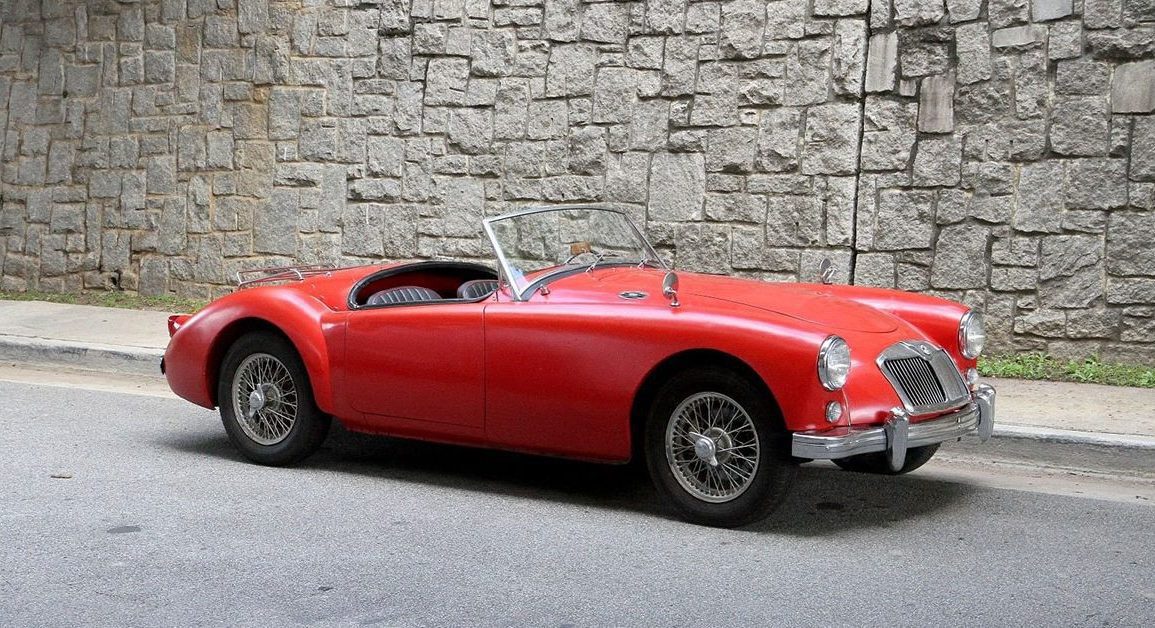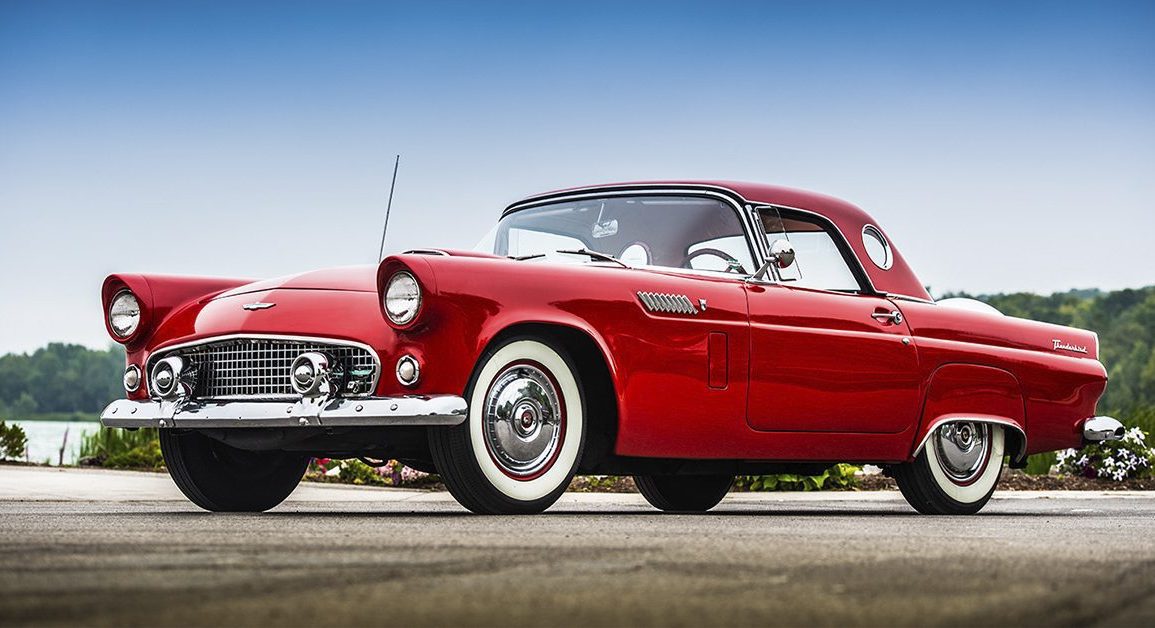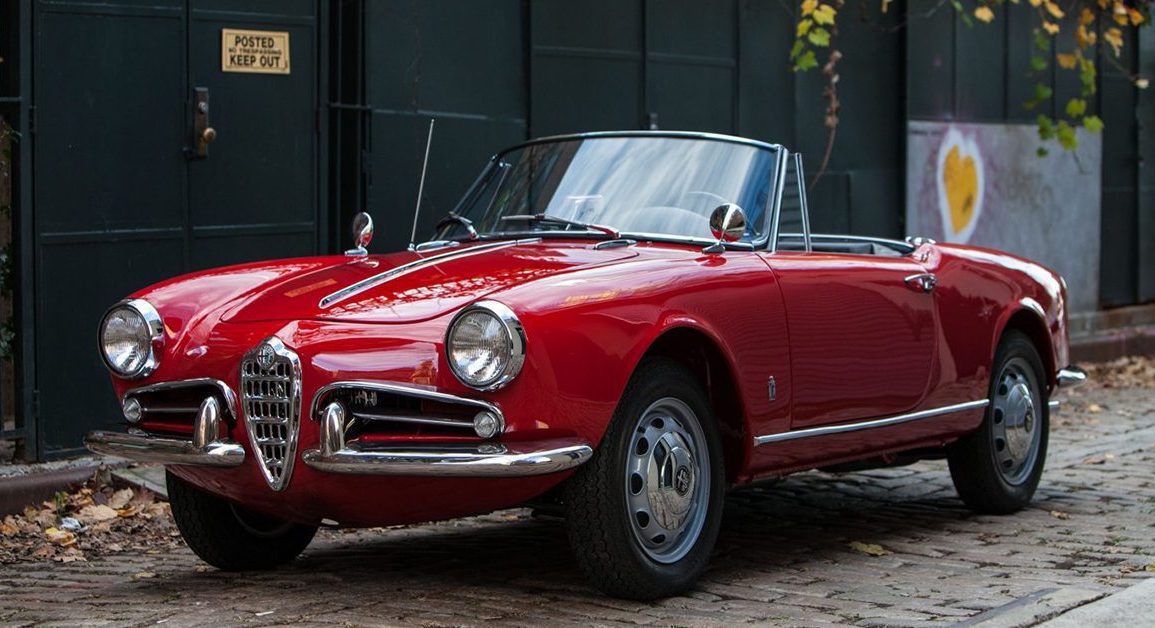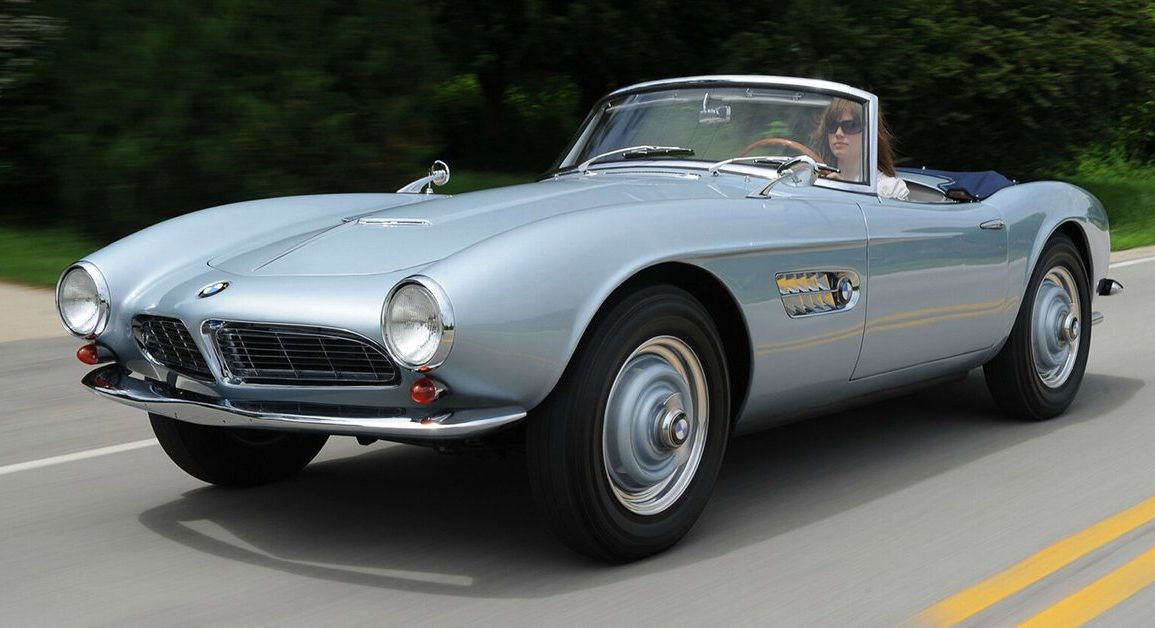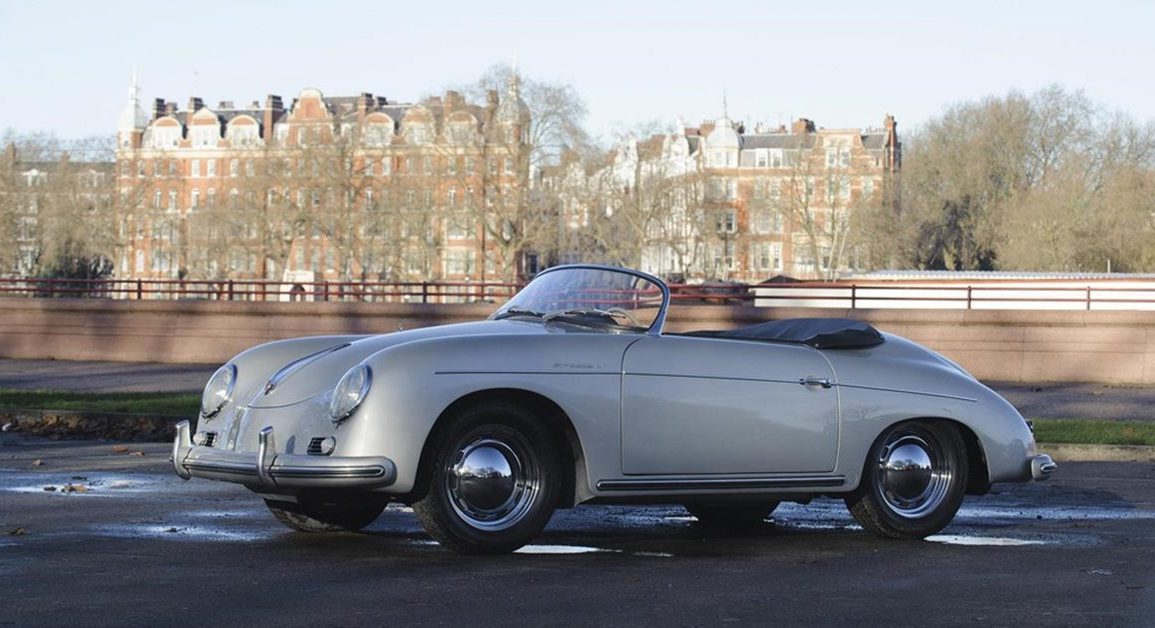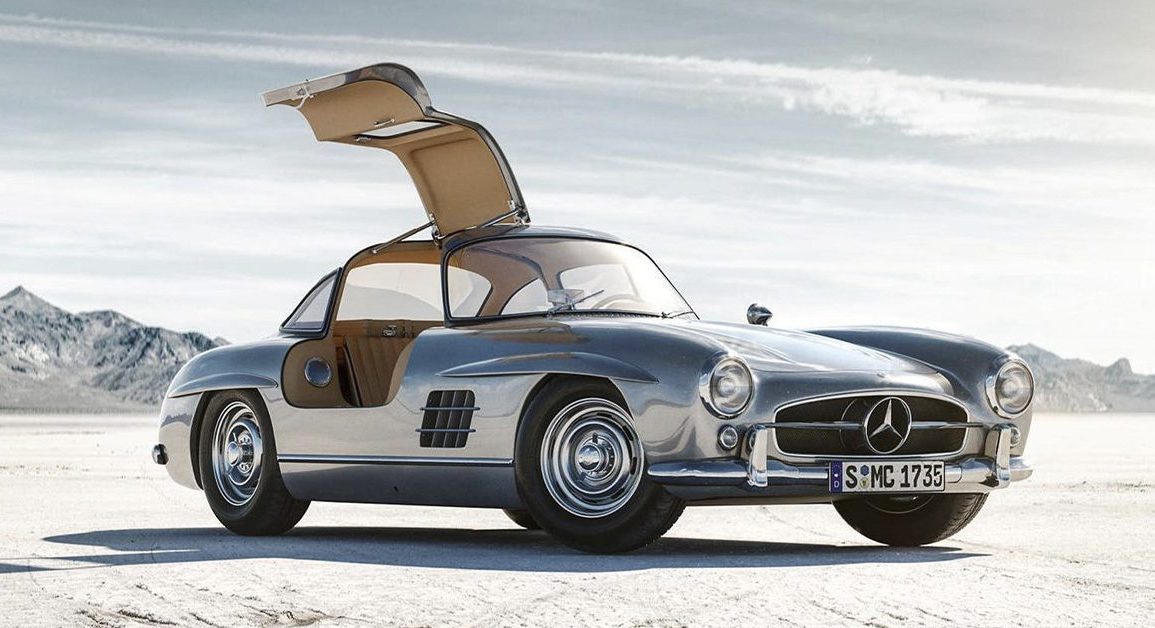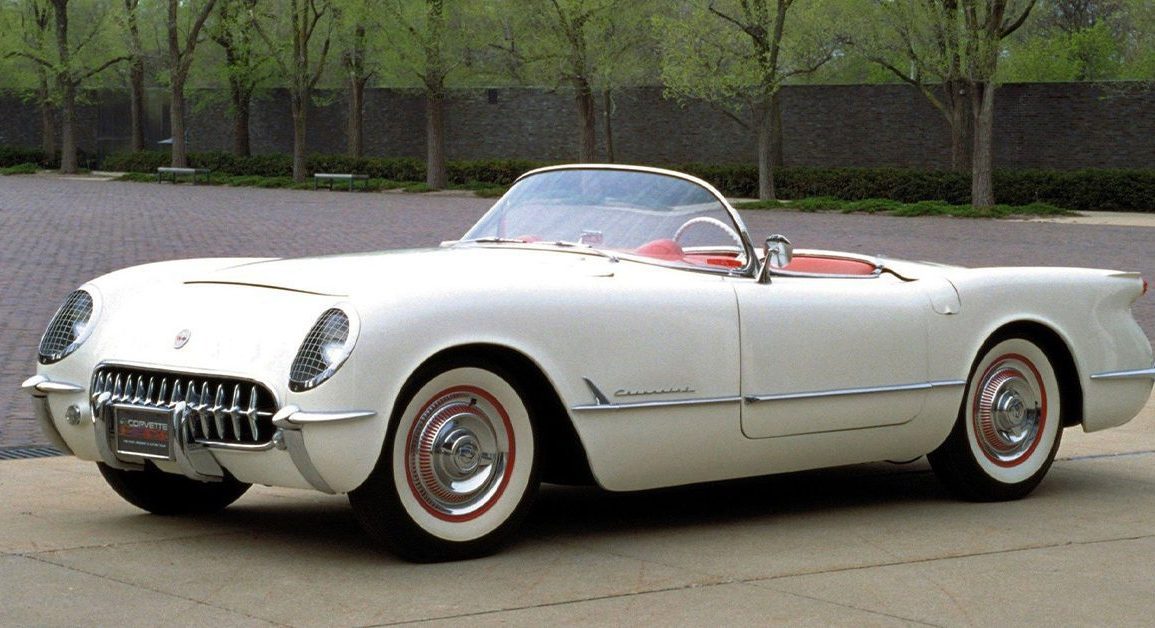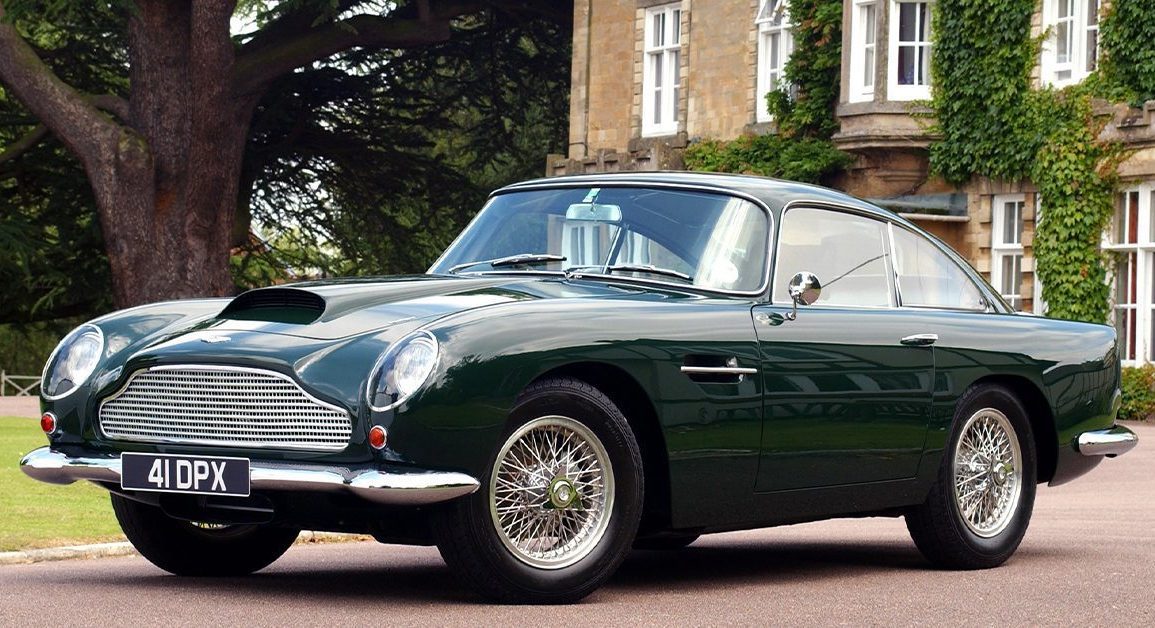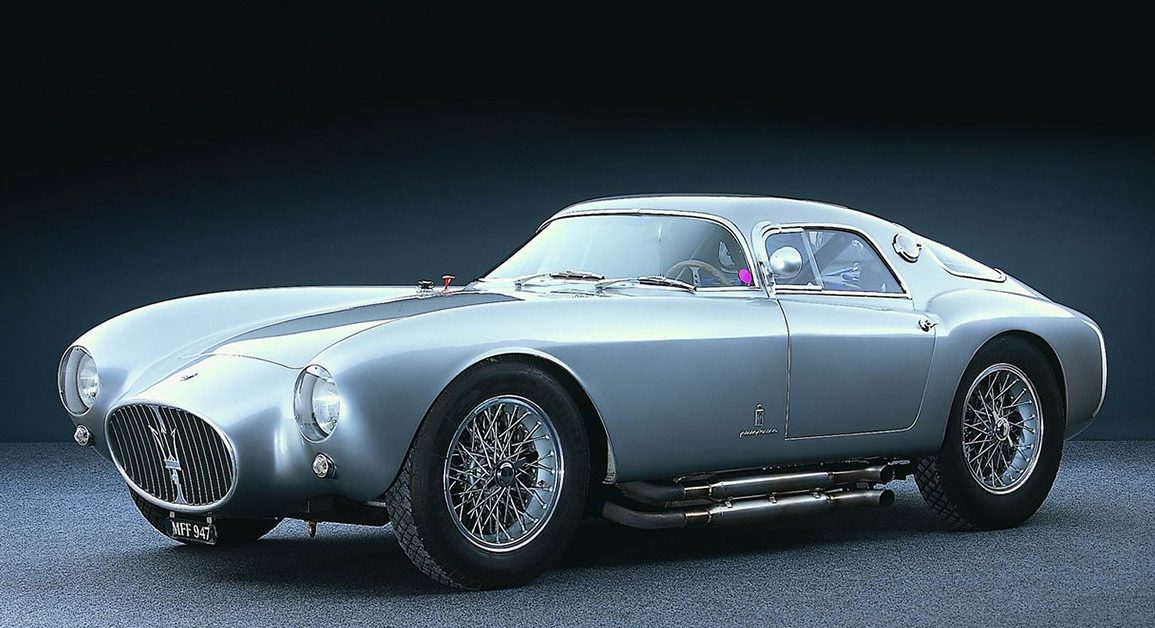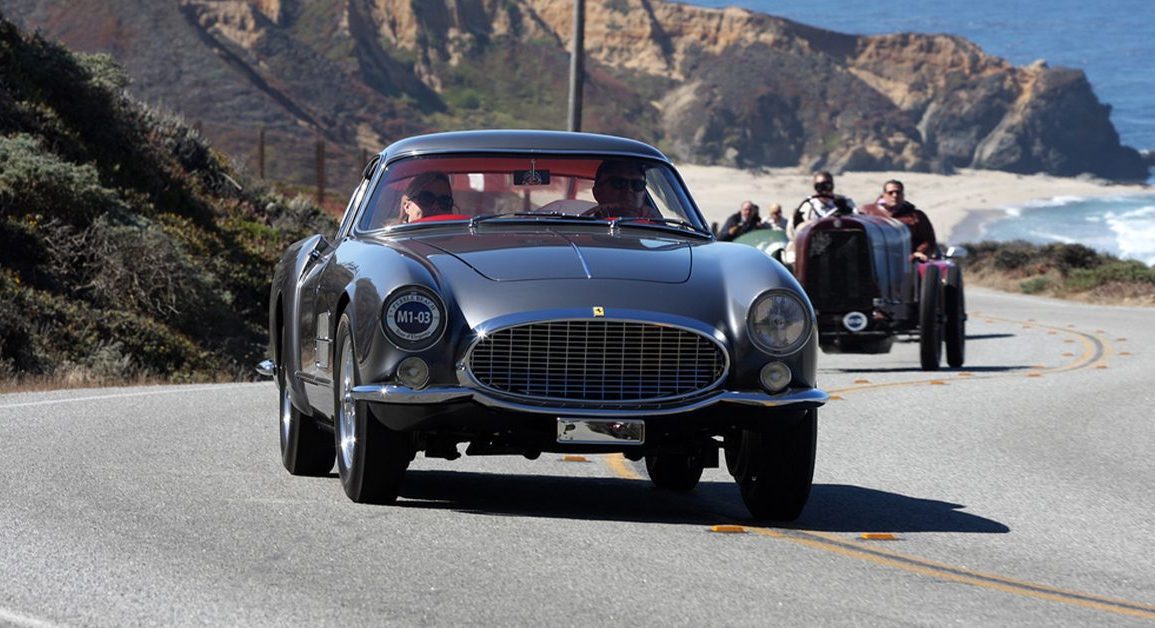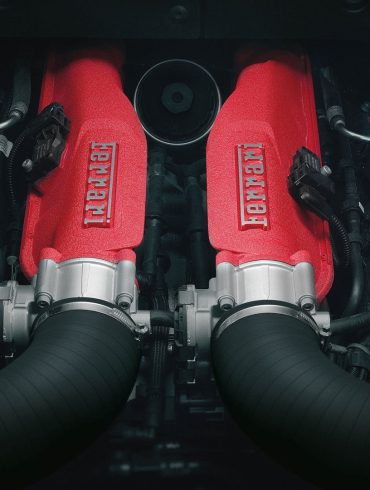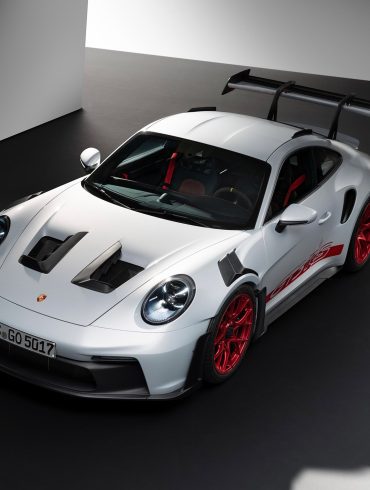Most Beautiful Cars of the 1950s
Updated September 2023 by Eduardo Zepeda
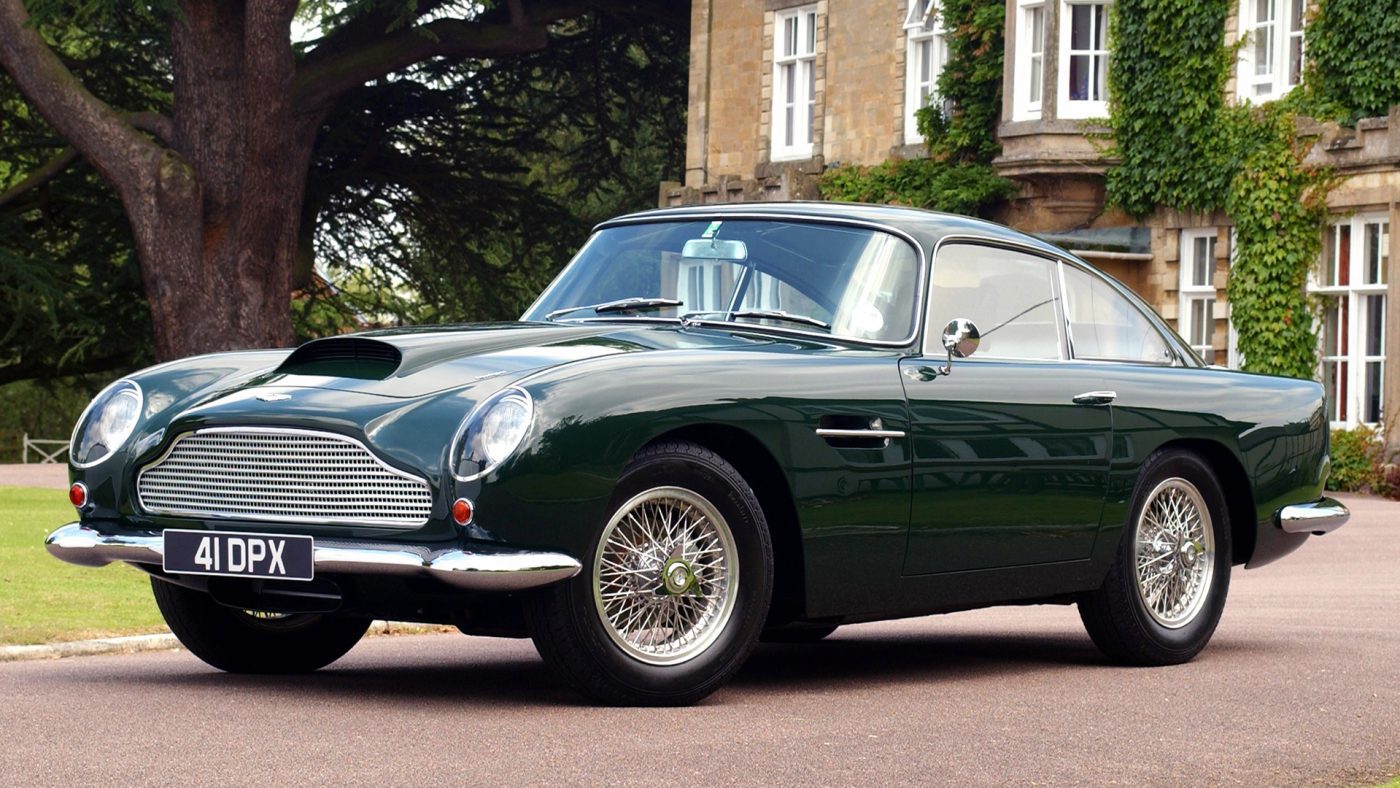
Space age influence and chrome everywhere, in a time of optimism and excess, characterized the design of 1950s cars
About Our Selections
The 1950s were a decade of flamboyant excess and futuristic optimism in car design. Inspired by the Jet Age and Space Race, cars sprouted tailfins like rockets, embraced chrome accents with fervor, and adopted wrap-around windshields that hinted at panoramic views of the future. Sleek, streamlined profiles emphasized length and low-slung silhouettes, while bold two-tone paint jobs and exuberant color palettes reflected the post-war confidence and prosperity. It was a time of bold experimentation and expressive styling, where cars were not just transportation but symbols of dreams and aspirations.
The 1950s stand out as a golden decade in the tapestry of automotive history. It was an era characterized by innovation, opulence, and breathtaking design. During this decade, the auto industry witnessed the creation of some exquisite models that became iconic automobiles. From slender designs adorned with chrome accents to gracefully sculpted masterpieces, the 1950s brought forth automotive beauty.
In this article, we'll explore the stunning cars of this remarkable decade. Each vehicle is a testament to the artistry and craftsmanship that defined an age of greatness.
1959 MG A 1600
A stylish and quirky British roadster
Why We Picked It:
In the vibrant automotive landscape of the late 1950s, the 1959 MGA 1600 emerged as a symbol of style, performance, and sheer driving pleasure.
This British roadster, part of MG's renowned MGA series, captured the hearts of enthusiasts with its sleek design and impressive specifications. Under the hood, the 1959 MGA 1500 housed a spirited 1,489-cc inline-four engine, delivering 78 horsepower.
This powerplant and a four-speed manual gearbox provided exhilarating acceleration and precise control. Weighing in at approximately 2,080 pounds, the MGA 1600 boasted a nimble and responsive feel on the road, making it a true driver's car.
The 1959 MGA 1600 has become a sought-after classic in the current market. A testament to its timeless appeal and enduring legacy in classic cars is that collectors and enthusiasts still adore this enduring classic.
Specifications:
Price: $50,000-$230,000
Engine: 1.6L Inline-Four
Power: 78 hp
Torque: 77 lb-ft
Transmission: 4-Speed Manual
Curb Weight: 2,080 lbs
Highlights:
The 1959 MGA 1600 was a significant departure from previous MG sports cars thanks to a new chassis and all-enveloping bodywork that contrasted with MG's traditional style. It was also more modern than its predecessors, with independent front suspension and disc brakes.
The MGA was graceful and sporty, with a long, streamlined hood and a curvy body. The vehicle came in several hues, including the traditional British Racing Green and red, white, and black.
Learn More:
1955 Ford Thunderbird
Ford's answer to British roadsters
Why We Picked It:
When GM launched the Chevrolet Corvette in 1953, Henry Ford II accelerated the creation of Ford's "sports" car to compete with the Corvette in a market dominated by British sports cars.
Luxury was in the Thunderbird's power steering with its adjustable column, power windows and seats, padded dashboard, concave steering wheel for safety, and a convertible variant.
The power came from a 4.8L V8 engine that produced 198 horsepower in the automatic version (Ford-O-Matic) and 193 hp with the manual gearbox, both with three speeds.
One of the most distinctive design elements of the 1955 Thunderbird was the porthole hardtop. This removable top featured circular "porthole" windows on each side, adding a unique and eye-catching element to the car's profile.
The body of the 1955 Thunderbird was characterized by smooth and flowing lines, with carefully sculpted fenders and body contours.
Specifications:
Price: $50,000-$100,000
Engine: 4.8L V8
Power: 198 hp
Torque: 285 lb-ft
Transmission: 3-Speed Auto / 3-Speed Manual
Curb Weight: 3,308lbs
Highlights:
The Thunderbird was Ford's response to the growing demand for two-seat sports cars in the post-war era. It represented a departure from the traditional family car concept, targeting buyers seeking a sportier and more luxurious driving experience.
The 1955 Thunderbird embraced classic roadster aesthetics, featuring a long hood, a short and sleek body, and a convertible top. Its design combined American flair with a dash of European elegance, drawing heavily from the era's European sports cars.
Learn More:
1955 Alfa Romeo Giulietta Spider Veloce
Irresistible Italian charm
Why We Picked It:
The Alfa Romeo Giulietta Spider Veloce is the ultimate expression of Italian style and zeal in the automotive realm. Since its introduction in the late 1950s, this timeless roadster has captivated fans with its stunning design and exciting performance.
With its long, sensual hood, beautiful contours, and signature Alfa Romeo grille, the Giulietta Spider Veloce has classic roadster proportions. The sleek silhouette and cozy cockpit give it an air of timeless sophistication.
The sporty interior displays the designer's attention to detail, and the driver-focused design and the soft convertible top add to the vehicle's allure by allowing for open-air driving.
The Veloce model has a powerful 1.3-liter twin-cam inline-four engine that generates about 90 horsepower. This power level makes for an exhilarating and entertaining ride in concert with the car's low curb weight and agile handling.
Specifications:
Price: $60,000-$140,000
Engine: 1.3L Inline-Four
Power: 90 hp
Torque: 87 lb-ft
Transmission: 4-Speed Manual
Curb Weight: 1,903 lbs
Highlights:
Pininfarina designed the Giulietta Spider Veloce, which features several classic Alfa Romeo styling cues, such as the triangular grille and the swept-back headlights.
The Giulietta Spider Veloce was also very rare. Only 2,500 examples were produced, making it one of the most collectible Alfa Romeos.
Learn More:
1957 BMW 507
The quintessential German roadster
Why We Picked It:
Between 1956 and 1959, Albrecht von Goertz created the stunning two-door, two-seater convertible known as the BMW 507 Roadster.
The idea came from Max Hoffman, an importer of the German brand in the United States in the post-war era, with the firm determination to relaunch the brand with a car that could rival the Mercedes-Benz 300 SL and compete with locals like the Ford Thunderbird and the Chevrolet Corvette.
It was a robust car because, despite its contained dimensions and having beautiful bodywork sculpted in aluminum, it weighed 2,822 pounds. Its long, sharp nose, voluptuous curves, and abundance of chrome gave it a particular sense of elegance.
The car's proportions were classic roadster, with a long hood that housed the engine and a short rear deck, creating a visually balanced and sporty profile.
A naturally aspirated, aluminum, 3.2-liter OHV V8 engine with two double-barrel Zenith carburetors provided 150 horsepower at the heart of the 507 vehicle.
Specifications:
Price: $50,0000-$230,000
Engine: 3.2L V8
Power: 140 hp
Torque: 163 lb-ft
Transmission: 4-Speed Manual
Curb Weight: 2,822 lbs
Highlights:
The BMW 507 was elegant and sophisticated, featuring flowing lines, graceful curves, and a harmonious overall design.
The 507 featured clean, uncluttered lines and minimalistic ornamentation. It also featured a luxurious and well-appointed interior with high-quality materials, leather upholstery, and a stylish dashboard with elegant instrumentation.
Learn More:
1956 Porsche Speedster
The Porsche that started it all
Why We Picked It:
Introduced in 1954, this iconic sports car embodies a fusion of design and performance that captivates enthusiasts. The Porsche 356 Speedster's design is a masterpiece in its simplicity and purity. Its sleek, low silhouette, curves, and minimalist details make it a timeless symbol of elegance.
The unique chopped windshield and side curtains further emphasize its character. Underneath its captivating exterior, the Porsche 356 Speedster featured a rear-mounted air-cooled 1.6 liter four engine with 70 horsepower. Its lightweight construction and agile handling made it an absolute delight to drive.
The design and styling of the Porsche 356 Speedster laid the foundation for Porsche sports cars such as the 911 and modern-day models like the Boxster and Cayman. As an icon of design, the Speedster's legacy is a testament to the appeal of craftsmanship. Every curve and contour is a testament to its aerodynamic efficiency.
Specifications:
Price: $250,000-$500,000
Engine: 1.6L Flat-Four
Power: 60 hp
Torque: 81 lb-ft
Transmission: 4-Speed Manual
Curb Weight: 1,930 lbs
Highlights:
The signature manually operated canvas top and minimalistic side windows underscore the Speedster's commitment to open-air driving, creating an unfiltered connection between driver and road.
The Speedster's clean lines, bulbous fenders, and teardrop-shaped headlights exude a timeless charm.
Learn More:
1954 Mercedes-Benz 300 SL
The Gullwing
Why We Picked It:
Within the list of the most beautiful cars in history, one can be the Mercedes-Benz 300SL, better known as Alas de Gull. Given the success achieved by the W194 coupés that brought Mercedes-Benz back to racing and dominated many international competitions in 1952, Mercedes Benz decided to create a street version.
This car had the designation "SL," the initial of the Light Sports in Germany, and the 300 for the engine's displacement of 3.0 liters, was equipped with a highly light tubular chassis, a fully independent suspension, and a six-cylinder engine.
The design of the 300SL looked stunning and contributed to its excellent performance as the car's proportions followed the classic sports car formula: a long hood housing the engine and a short rear deck.
Clocking in at 240 horsepower through a four-speed manual gearbox, the 300SL was the fastest production car of its time. This combination of power and lightness was demonstrated in acceleration from 0 to 60 mph in less than nine seconds.
Specifications:
Price: $1,000,000-$3,000,000
Engine: 3.0L Inline-Six
Power: 240 hp
Torque: 217 lb-ft
Transmission: 4-Speed Manual
Curb Weight: 2,851 lbs
Highlights:
The 300SL's bodywork was aerodynamically advanced for its time, with a sleek, teardrop-shaped profile.
The world of aviation inspired the Gullwing's design. The doors, which open upwards like the wings of a gull, were a radical design for the time and helped to give the car a distinctive look.
Learn More:
1953 Chevrolet Corvette
An American Icon
Why We Picked It:
The Chevrolet Corvette, introduced in 1953, forever altered the automotive landscape in the United States. Though it would be considered crude and spartan by today's standards, the first-year Vette marked a sea-change in the way buyers viewed automobiles, inspiring competitors like the Ford Thunderbird and likely leading to the high-horsepower muscle cars that would become commonplace on American roads a decade or so later.
High-performance variants of Chevrolet's famous 235-cubic-inch inline-six cylinder, dubbed Blue Flame Six, were standard equipment in all 1953 Corvettes until the introduction of the Chevy Small Blockthe following year. The Blue Six produced an impressive 150 horsepower.
Due to its innovative use of fiberglass, distinctive front grille, elegant appearance, and low production numbers, the 1953 Chevrolet Corvette became an instant classic, launching a legend among American sports car fans that lives on to this day.
Specifications:
Price: $90,000-$800,000
Engine: 3.85L Inline-Six
Power: 150 hp
Torque: 223 lb-ft
Transmission: 2-Speed Automatic
Curb Weight: 2,700 lbs
Highlights:
In its debut year, the 1953 Corvette was only available in a striking Polo White exterior finish with a red interior.
Only 300 units of the 1953 Corvette were produced, making it a rare and collectible classic.
Learn More:
1958 Aston Martin DB4
A British-Italian masterpiece
Why We Picked It:
The Aston Martin DB4 Series One, produced from 1958 to 1961, holds a special place in automotive history due to its exceptional styling, design, and performance. This British-Italian masterpiece exuded timeless elegance and grace, featuring a beautifully proportioned body with clean, uncluttered lines.
It was designed by Carrozzeria Touring of Milan, renowned for its Superleggera construction technique, which used lightweight aluminum panels over a tubular steel frame. The car was also aerodynamic, with a drag coefficient of just 0.32.
The DB4 was powered by a 3.7-liter six-cylinder engine that produced 240 horsepower. Its powertrain made it one of the fastest cars of its time and could reach a top speed of 145 mph. It also featured an independent front suspension and a live rear axle, resulting in a balanced and sporty handling experience.
Specifications:
Price: $1,000,000-$2,000,000
Engine: 3.7L Inline-Six
Power: 240 hp
Torque: 245 lb-ft
Transmission: 4-Speed Manual / 3-Speed Automatic
Curb Weight: 2,884 lbs
Highlights:
Inside, the DB4 Series I featured a luxurious interior with Connolly leather upholstery, Wilton wool carpets, and a beautifully crafted dashboard with Smiths instruments.
The DB4 Series One sported a distinctive front grille with vertical bars, a signature design element synonymous with Aston Martin's identity.
Learn More:
1953 Maserati A6GCS/53 Berlinetta
The most beautiful Maserati ever?
Why We Picked It:
Only four units of the Maserati A6GCS/53 were manufactured, a design masterpiece signed by Pininfarina that raised the throne of Maserati, at the highest point of the coachbuilder's relations with Ferrari, which led to some discomfort and some disagreement.
Part of a mechanized chassis that was for sale at the Maserati dealer in Rome, owned by Guglielmo Dei, "Mimmo" Dei, who commissioned Pininfarina to carry out the bodywork, making it one of the most beautiful cars of all time.
Pininfarina created a distinct design with brand traits for the Maserati chassis. The tubular chassis is derived from the 1940 A6GCS with improvements and is powered by an aluminum-alloy six-cylinder in-line engine churning out 170 horsepower.
The Maserati A6GCS/53 Berlinetta's styling and design were special due to their combination of aerodynamic elegance, distinctive details, race-inspired heritage, and handcrafted excellence.
Specifications:
Price: $3,000,000–$5,000,000
Engine: 2.0L Inline-Six
Power: 170 hp
Torque: 143 lb-ft
Transmission: 4-Speed Manual
Curb Weight: 1,984 lbs
Highlights:
Italian craftsmanship and attention to detail were evident in the car's handcrafted construction. Each Berlinetta was a work of art tailored to the owner's preferences.
The A6GCS/53 Berlinetta was born from the company's popular racing cars, showcasing its performance-oriented design.
Learn More:
1956 Ferrari 250 Europa Scaglietti Berlinetta
Capable and stunning on and off the track
Why We Picked It:
Ferrari's famous Berlinetta series began with this model. These automobiles were made for trips to the track and victories in the competition.
The Ferrari 250 Europa Scaglietti Berlinetta is an absolute work of art in design. The renowned Pininfarina studio designed its aerodynamic and stylish body. It has an instantly recognizable profile because of its tall hood, chiseled fenders, and trademark triple louvers on the trunk lid. The classic egg-crate grille and shiny chrome details add to its allure.
The Berlinetta was equipped with a 3.0-liter V12 engine that generated around 240 horsepower and was paired with a four-speed manual transmission. It could accelerate from 0 to 60 mph in slightly over six seconds and hit a top speed of about 150 mph. The Ferrari 250 GT Berlinetta's timeless beauty and exhilarating performance made it an icon among collectors and vintage sports car fans.
Specifications:
Price: $1,000,000-$3,000,000
Engine: 3.0L V12
Power: 240 hp
Torque: 203 lb-ft
Transmission: 4-Speed Manual
Curb Weight: 2,359 lbs
Highlights:
Pininfarina designed the car, featuring several classic Ferrari styling cues, such as the round headlights and the sloping rear end.
The Ferrari 250 Europa Scaglietti Berlinettaa was also very innovative for its time. It was one of the first cars to have a unitary body, which made it very strong and lightweight. It also had innovative features, such as independent suspension and disc brakes.


